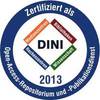In: American Journal of Nephrology, 55 (2024), Nr. 2. pp. 175-186. ISSN 0250-8095 (Druck-Ausg.); 1421-9670 (Online-Ausg.)
Preview |
PDF, English
- main document
Download (647kB) | Terms of use |
Abstract
Introduction: The aim of the study was to investigate associations between diabetic retinopathy (DR) and chronic kidney disease (CKD) in patients with type 2 diabetes (TD2). Methods: The participants of the cross-sectional, community-based Tongren Health Care Study underwent a detailed medical and ophthalmological examination. We defined TD2 by a fasting plasma glucose concentration of ≥7.0 mmol/L or a medical history. CKD was classified as either reduced estimated glomerular filtration rate (eGFR) of <60 mL/min/1.73 mm<sup>2</sup> or presence of albuminuria. DR was assessed using color fundus photographs. Results: Out of 62,217 participants of the Tongren Health Care Study, 5,103 (8.2%) patients had TD2. The prevalence of DR was 12.8% (95% CI, 11.8%, 13.7%), CKD was 13.3% (95% CI, 12.4%, 14.3%), and the subtypes of CKD including reduced eGFR and albuminuria was 4.6% (95% CI, 4.2%, 5.1%) and 10.1% (95% CI, 9.3%, 10.9%), respectively. DR was detectable in 21.0% of the patients with CKD, while CKD was present in 20.9% of the DR patients. Higher DR prevalence was associated with higher prevalence of albuminuria and reduced eGFR (both <i>p</i> < 0.05). Factors independently associated with the presence of CKD instead of DR were older age (<i>p</i> < 0.001, OR = 1.05), a higher body mass index (<i>p</i> < 0.001, OR = 1.14), a higher serum concentration of triglycerides (<i>p</i> < 0.001, OR = 1.26), and a lower blood glucose (<i>p</i> < 0.001, OR = 0.93). Having hypertension was additionally associated with the presence of reduced eGFR as compared with DR (<i>p</i> = 0.005, OR = 4.47). <b><i>Conclusions:</i></b> TD2 patients of older age and with higher body mass index, hypertension, and dyslipidemia had a higher probability of being affected by CKD rather than DR, while those with a higher blood glucose level were more prone to DR than CKD.
| Document type: | Article |
|---|---|
| Journal or Publication Title: | American Journal of Nephrology |
| Volume: | 55 |
| Number: | 2 |
| Publisher: | Karger |
| Place of Publication: | Basel [u.a.] |
| Edition: | Zweitveröffentlichung |
| Date Deposited: | 16 May 2025 10:23 |
| Date: | 2024 |
| ISSN: | 0250-8095 (Druck-Ausg.); 1421-9670 (Online-Ausg.) |
| Number of Pages: | 12 |
| Page Range: | pp. 175-186 |
| Faculties / Institutes: | Medizinische Fakultät Mannheim > Augenklinik |
| Uncontrolled Keywords: | Type 2 diabetes, Diabetic retinopathy, Chronic kidney disease, Diabetic microvascular complication, Albuminuria, Estimated glomerular filtration rate, Albumin-to-creatinine ratio |
| Additional Information: | Dieser Beitrag ist aufgrund einer (DFG-geförderten) Allianz bzw. Nationallizenz frei zugänglich. *** This publication is freely accessible due to an Alliance licence and a national licence (funded by the DFG, German Research Foundation) respectively. |









